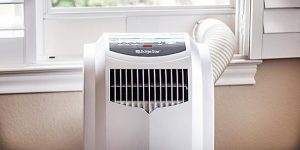Do All Portable Air Conditioners Have to Be Vented Out a Window?
Introduction
Portable air conditioners have become a popular choice for those seeking to beat the heat without a central cooling system. These versatile units offer flexibility and convenience, making them a go-to solution for cooling individual rooms or apartments. However, there’s a common question that arises when it comes to using portable air conditioners: Do all portable air conditioners have to be vented out a window? In this article, we will explore the necessity of venting and discuss alternative methods for cooling your space efficiently.
The Importance of Ventilation for Portable Air Conditioners
Why Ventilation is Crucial
Portable air conditioners work on the principle of removing hot air from the room and expelling it outside. This process involves taking in warm air, cooling it, and then releasing the heat generated during the cooling process. If this hot air is not properly vented, it will circulate back into the room, making the air conditioner’s operation inefficient and counterproductive.

Energy Efficiency and Performance
Ventilation is crucial to maintaining the energy efficiency and performance of your portable air conditioner. When the hot air is continuously recirculated, the cooling process becomes less effective, forcing the unit to work harder and consume more energy. This not only increases your electricity bills but also shortens the lifespan of the appliance.
Types of Ventilation for Portable Air Conditioners
Window Ventilation
The most common and recommended method for venting portable air conditioners is through a window. This can be accomplished using an included window installation kit that usually consists of a vent hose and an adjustable window panel. The hot air is then expelled outside through the hose, allowing the unit to cool the room efficiently.
Sliding Door Ventilation
If you don’t have a suitable window, you can also vent your portable air conditioner through a sliding glass door. Some air conditioner models come with kits designed for this purpose. Similar to window ventilation, the hot air is directed outside through the door, maintaining the appliance’s effectiveness.
Drop Ceiling Ventilation
In some cases, you might have access to a drop ceiling, which can be utilized for ventilation. However, this method is less common and may require additional modifications to ensure a proper fit. Proper sealing is crucial to prevent the recirculation of hot air.
Alternative Cooling Methods
Ventless Air Conditioners
Ventless air conditioners, also known as evaporative or swamp coolers, are an alternative to traditional portable air conditioners. These units use the process of evaporative cooling to lower the room temperature. Unlike portable air conditioners, ventless coolers do not require external venting. Instead, they use water and a fan to create a cooling effect. While they are effective in dry climates, they may not be as suitable for humid regions.
Dual Hose Portable Air Conditioners
Some portable air conditioner models feature dual hoses. These units have an intake hose to bring in fresh air from outside, while the other hose expels hot air. Dual hose air conditioners are more efficient than single hose units because they do not create negative pressure within the room, reducing the likelihood of hot air being drawn back into the space. This makes them a better choice if you want to minimize ventilation requirements.

Ventilation Workarounds
If you’re in a situation where traditional venting methods aren’t feasible, there are workarounds you can explore. One option is to use a drop ceiling, as mentioned earlier, although this may require some modifications. Alternatively, you can create a ducting system to route hot air into a storage closet, attic, or crawl space. However, these methods can be complex and should only be considered as a last resort.
Conclusion
In conclusion, ventilation is a critical aspect of using portable air conditioners effectively. Proper venting ensures that hot air is expelled from the room, allowing the unit to cool efficiently while maintaining energy efficiency. While window ventilation is the most common method, alternative options like sliding door ventilation and dual hose units provide flexibility for those with specific requirements. Ventless air conditioners and other workarounds can also be considered if traditional venting methods are not feasible. By understanding the importance of ventilation and exploring the various options available, you can make an informed decision on how to best cool your space with a portable air conditioner while keeping it comfortable and energy-efficient. Read on here.


